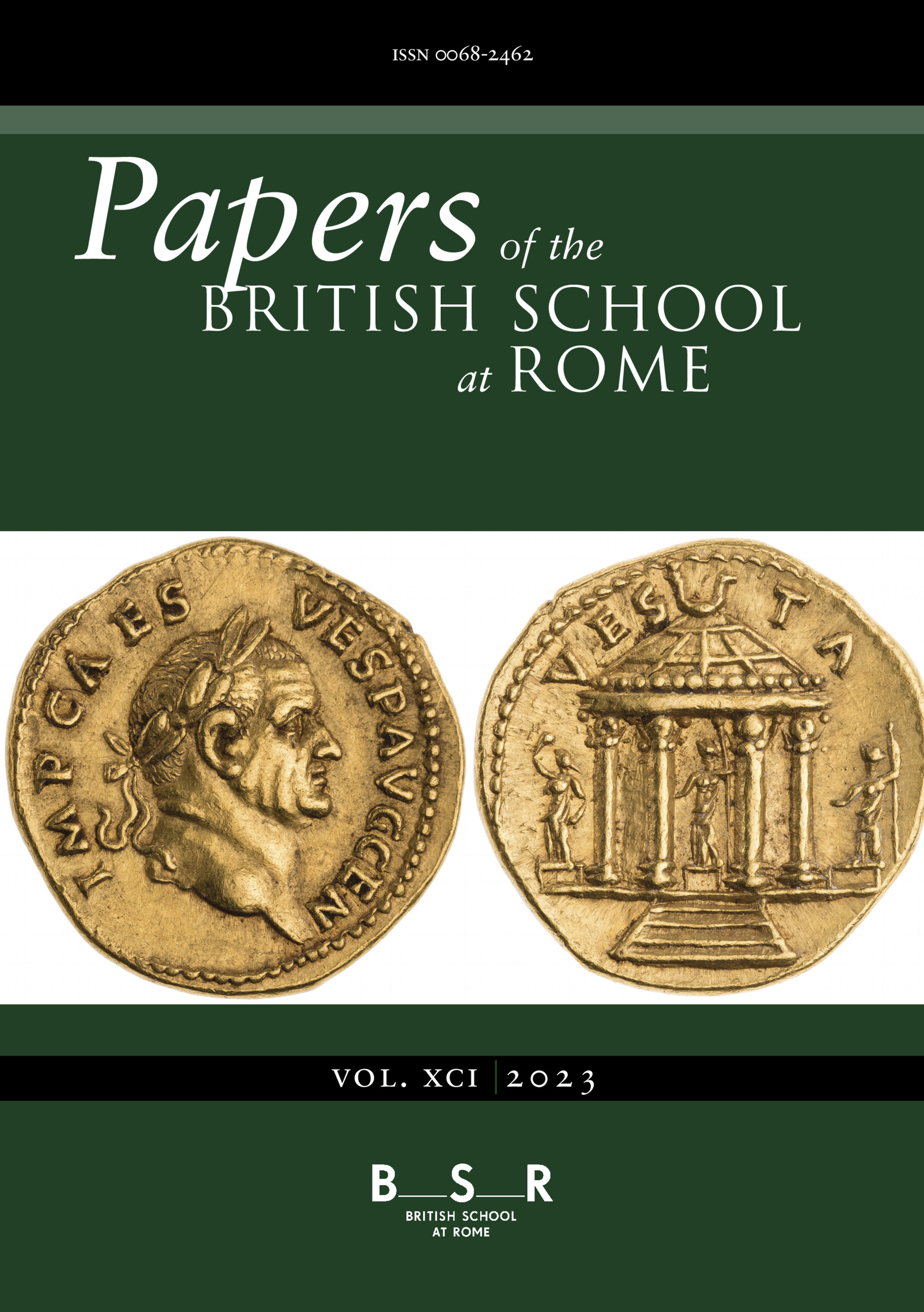No CrossRef data available.
Article contents
THE ANCIENT RELIEF IN PALAZZO SACCHETTI: VISUALIZING IMPERIAL LEGITIMACY, EXPLORING EMPEROR-SENATE RELATIONS AND EXPANDING THE MEANING OF IMPERIAL IUSTITIA
Published online by Cambridge University Press: 09 September 2025
Abstract
This article offers a fresh interpretation of the ancient Roman relief at Palazzo Sacchetti, identifying it as a depiction of the senatorial delegation meeting Septimius Severus at Interamna in AD 193. Through iconographic analysis, it argues that the relief embodies the Senate’s expectations for Severus’ rule, grounding his image in the principle of Iustitia and portraying him as a model of moderation and fairness. Ultimately, it reveals how the relief uses a ‘historical’ depiction of a real event as a lens to examine the negotiation of power dynamics between the emperor and the Senate at the outset of Septimius Severus’ reign.
Questo articolo propone una nuova interpretazione dell’antico rilievo romano conservato a Palazzo Sacchetti, identificandolo come una rappresentazione dell’incontro tra la delegazione senatoriale e Settimio Severo a Interamna nel 193 d.C. Attraverso un’analisi iconografica, si sostiene che il rilievo esprima le aspettative del Senato nei confronti del nuovo imperatore, ancorando la sua immagine al principio della Iustitia e presentandolo come modello di moderazione ed equità. In ultima analisi, l’articolo mostra come il rilievo utilizzi una raffigurazione ‘storica’ di un evento reale per riflettere sulle dinamiche di potere negoziate tra imperatore e Senato all’inizio del regno di Settimio Severo.
Information
- Type
- Articles
- Information
- Copyright
- © The Author(s), 2025. Published by Cambridge University Press on behalf of The British School at Rome.

